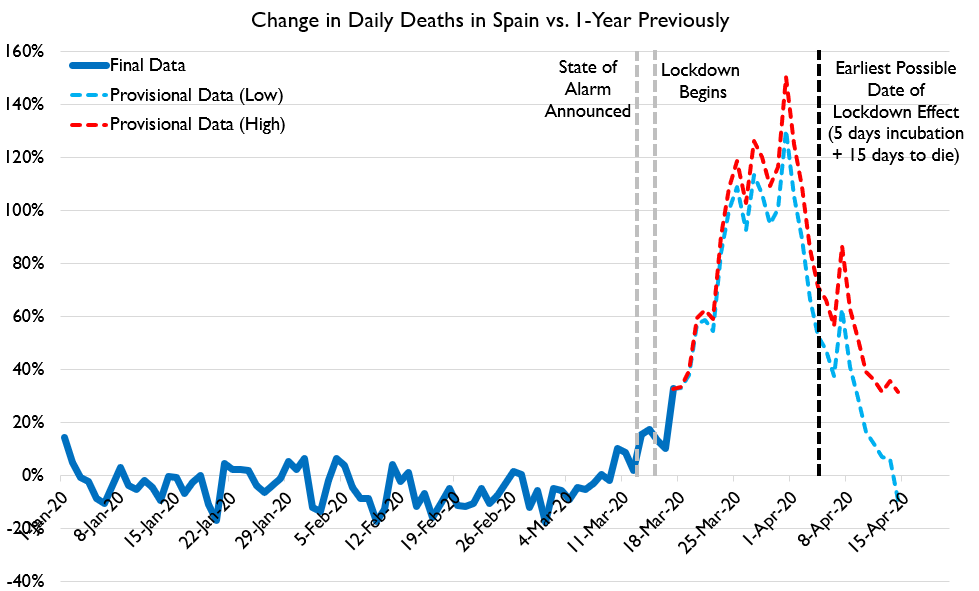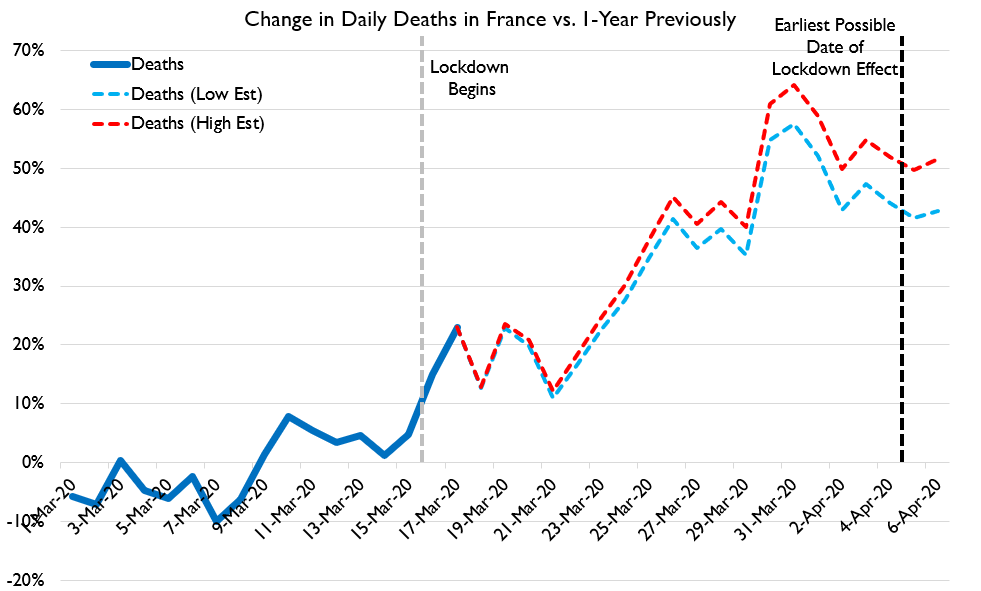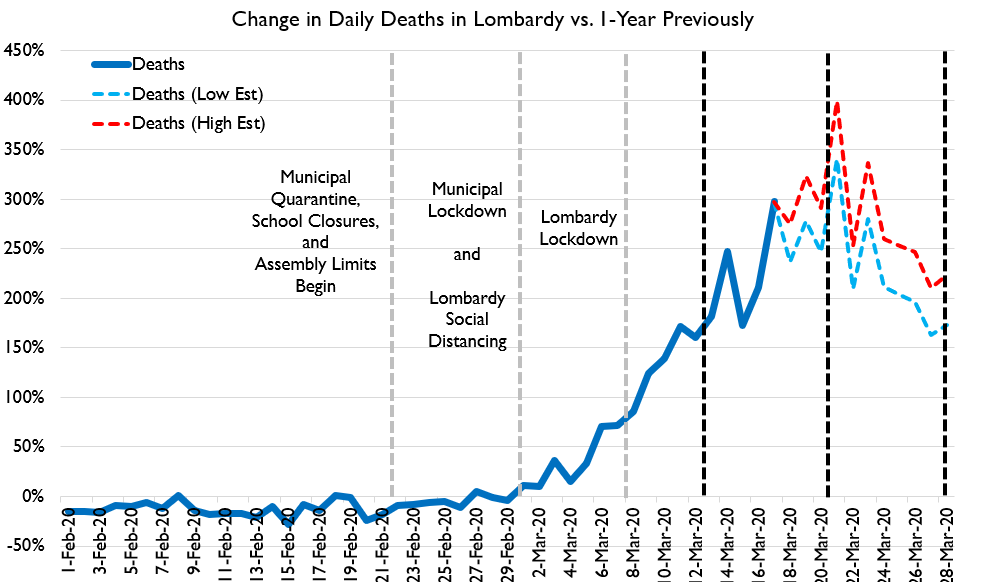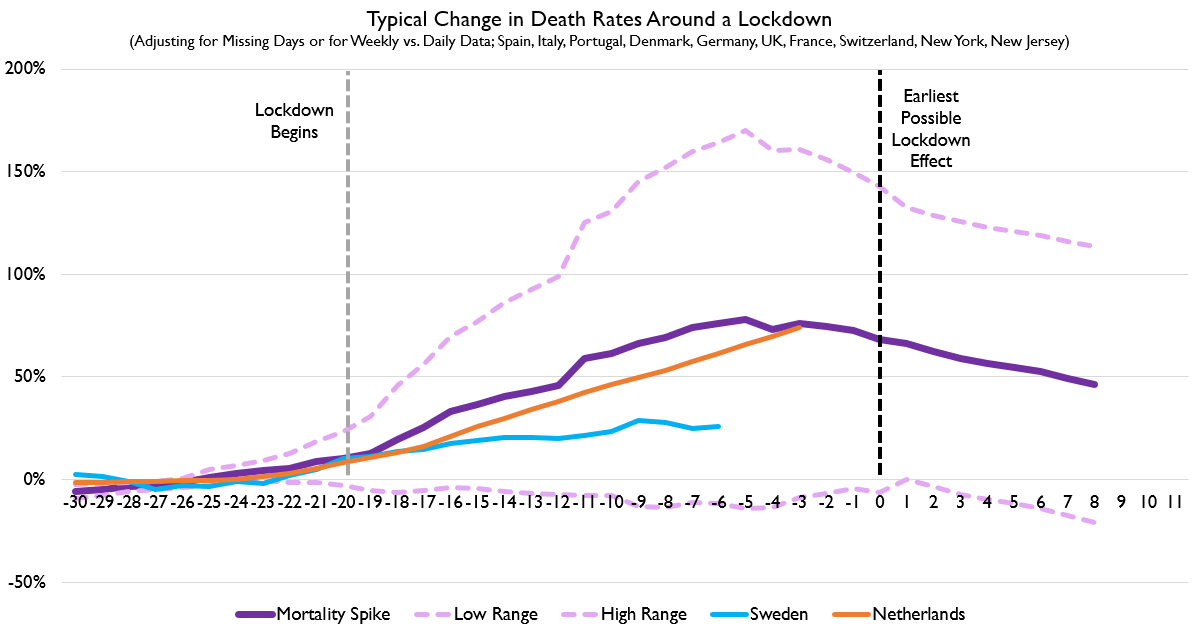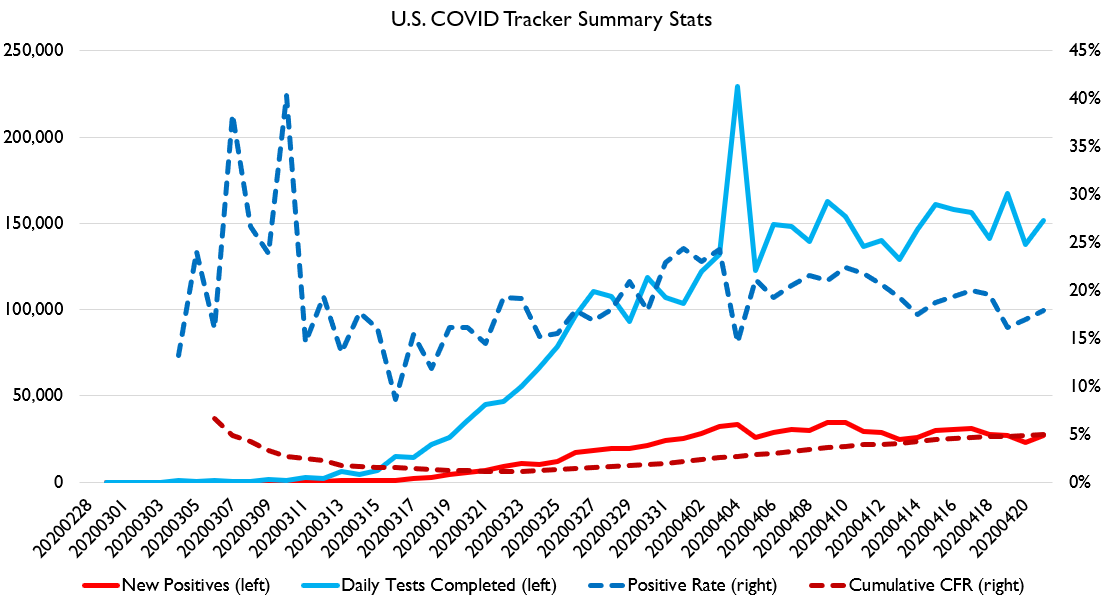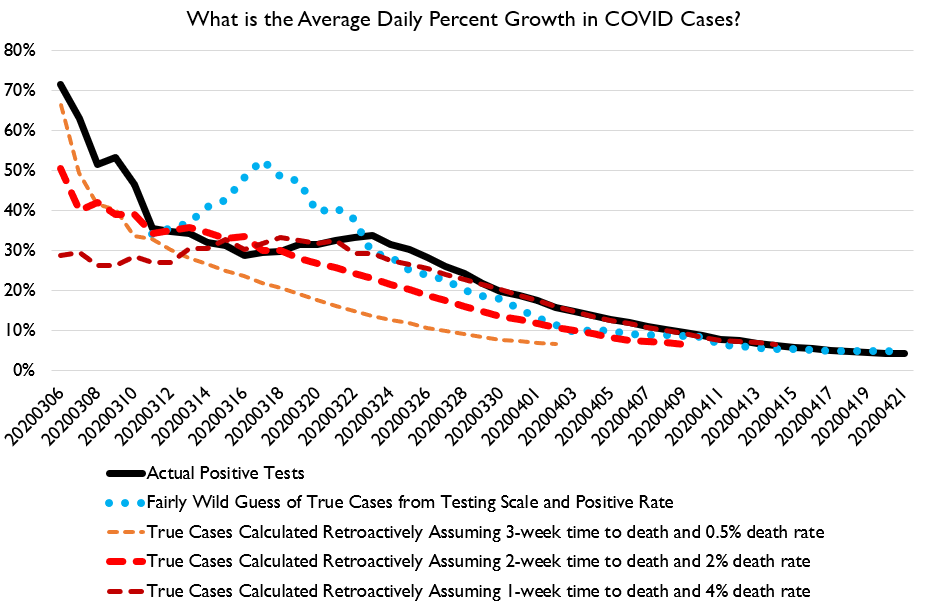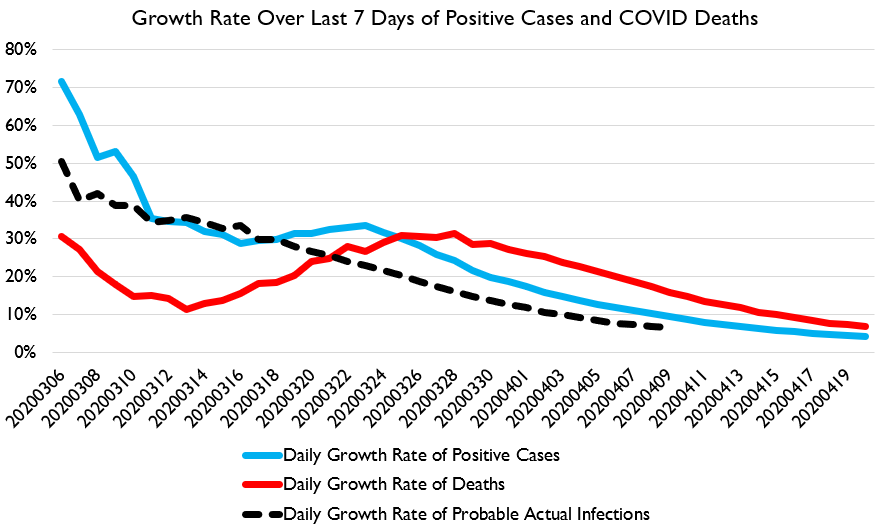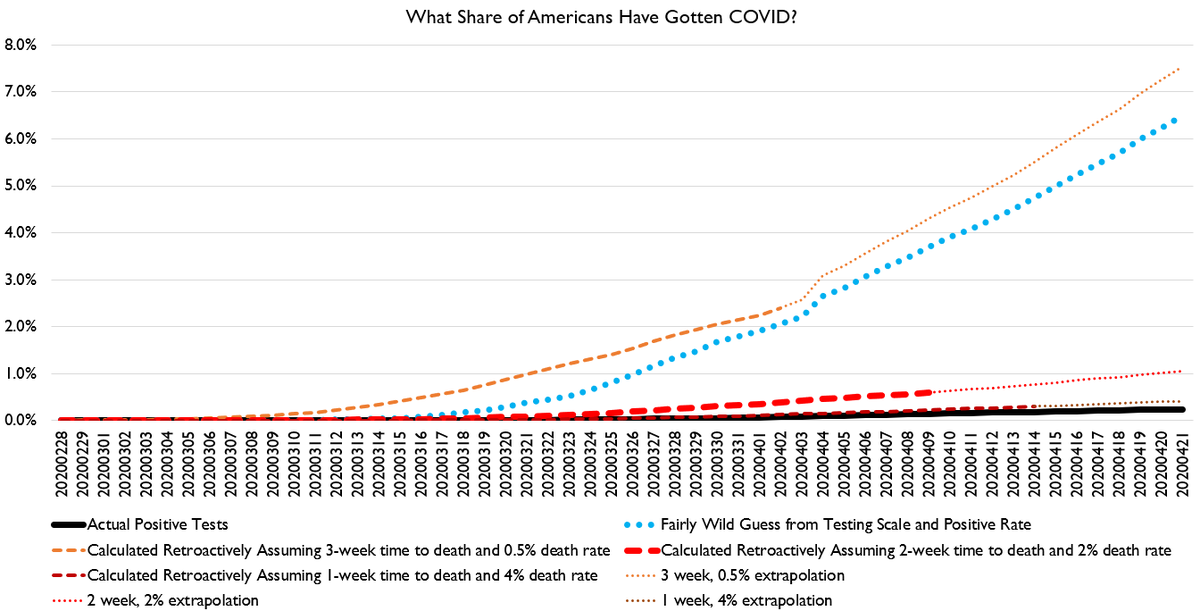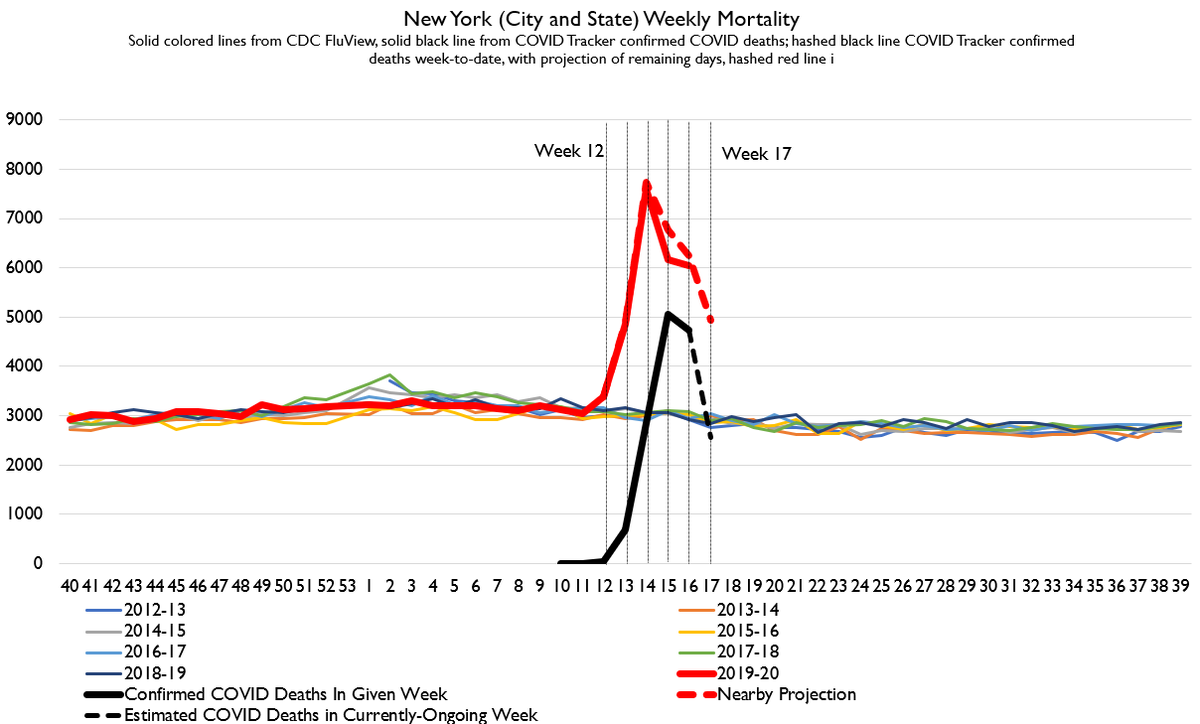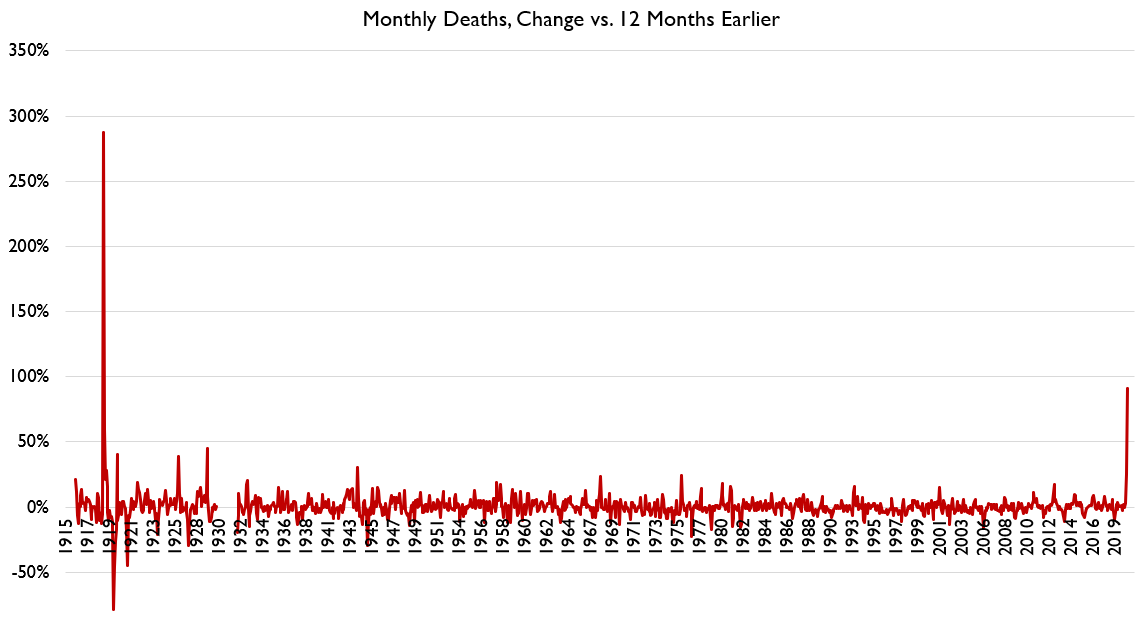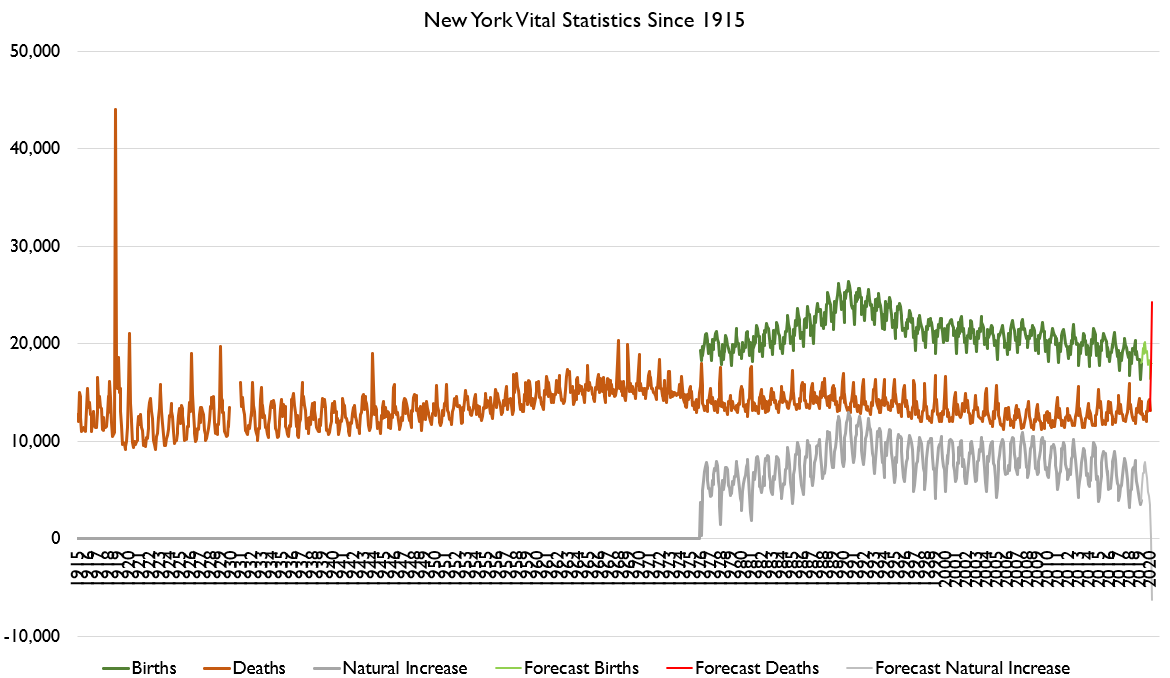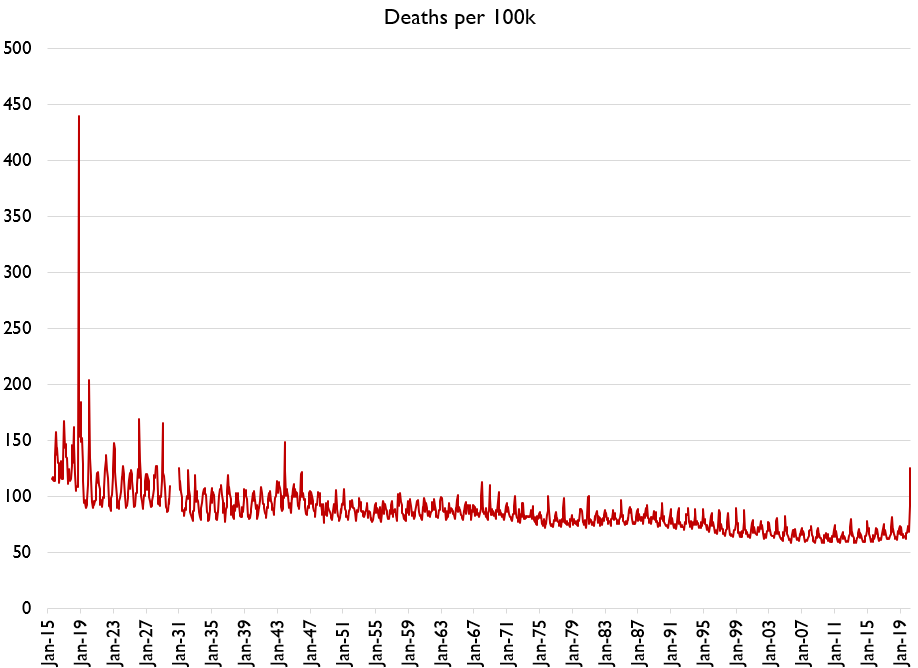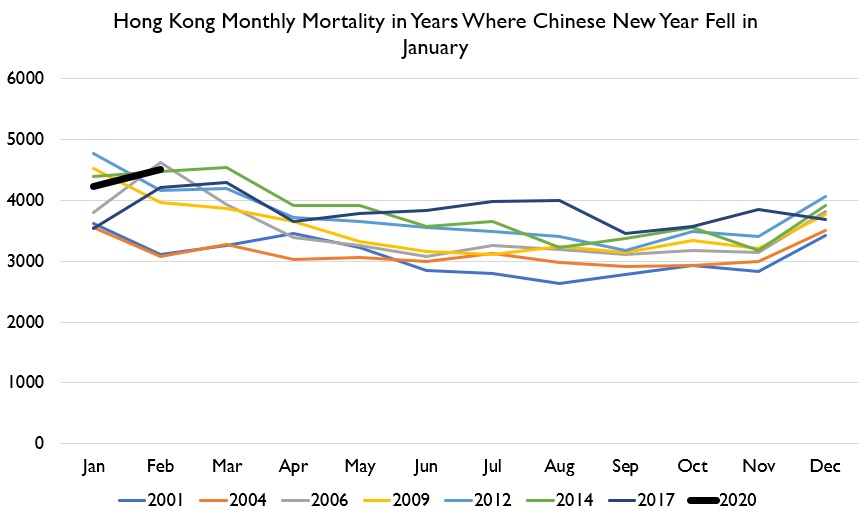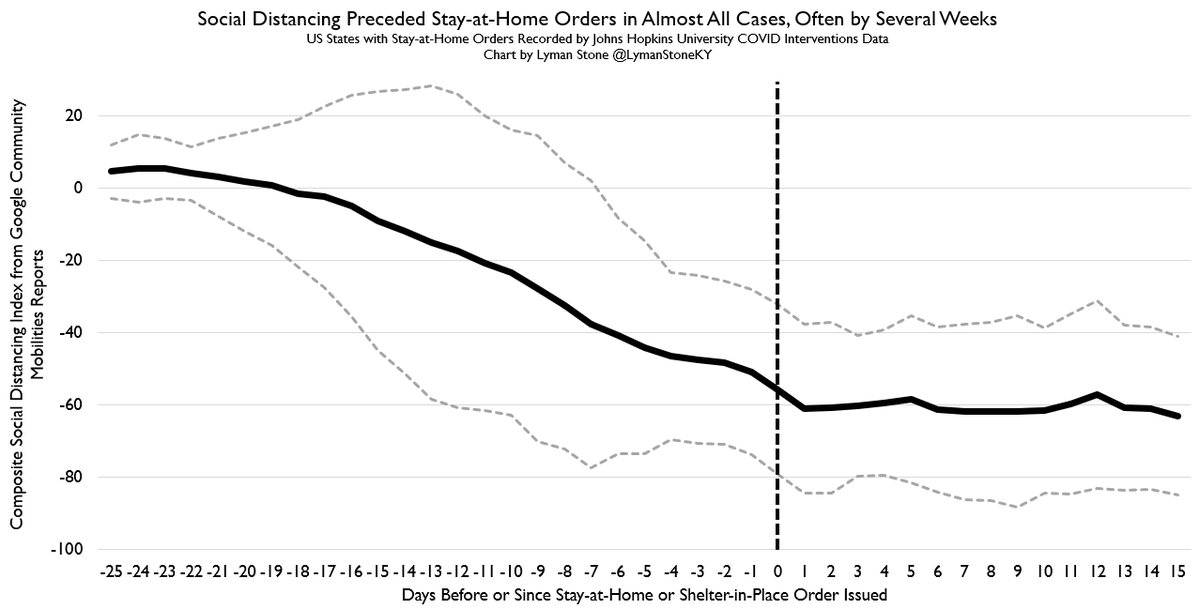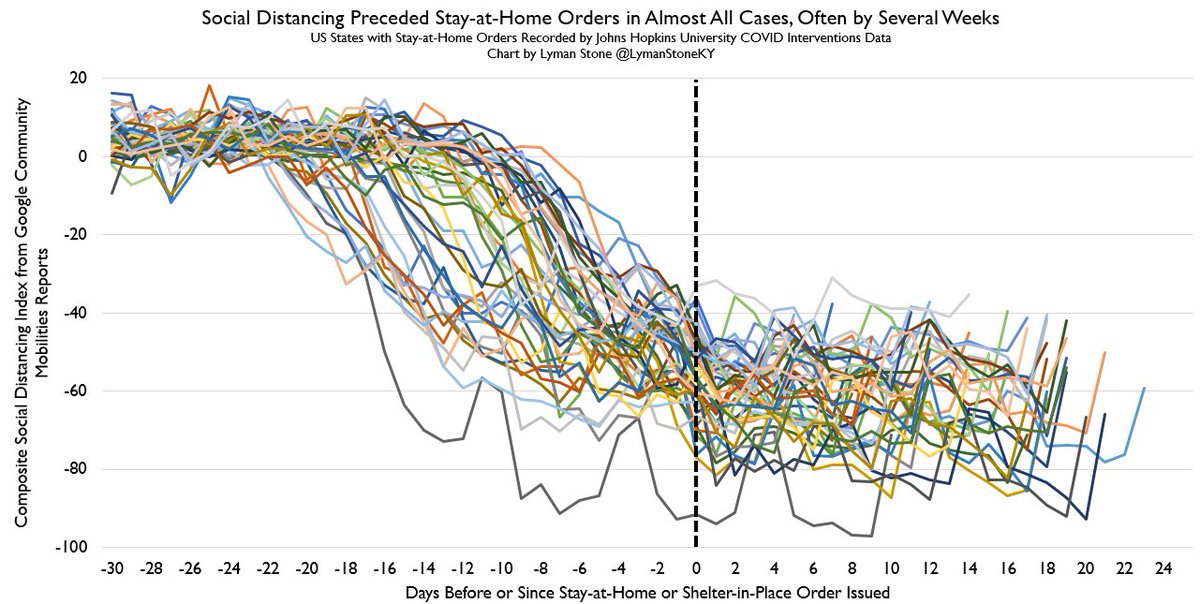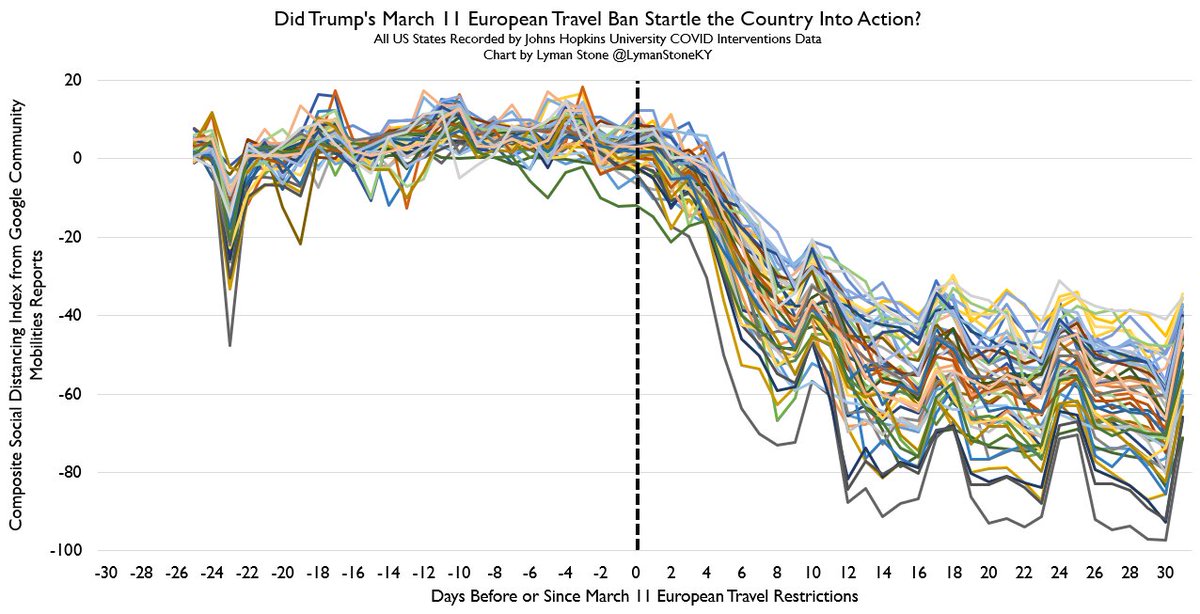I& #39;m at @PublicDiscourse today writing up my take on why I don& #39;t think lockdowns work.
I use data from 13 regions around the world, as well as all US county data, to show that lockdowns have no demonstrated connection to reduced deaths. https://www.thepublicdiscourse.com/2020/04/62572/ ">https://www.thepublicdiscourse.com/2020/04/6...
I use data from 13 regions around the world, as well as all US county data, to show that lockdowns have no demonstrated connection to reduced deaths. https://www.thepublicdiscourse.com/2020/04/62572/ ">https://www.thepublicdiscourse.com/2020/04/6...
One of the lowkey most important contributions of this article is my insistence on a formal definition of "lockdowns," an issue that @PTBwrites and @Comparativist have both raised many times.
I am unwilling to be constrained by the absurd vaguery which classifies "any major effort to reduce the COVID death toll" as a lockdown. I think, if we are to advance our understanding of the public health issues involved here, we need precise terms.
My definition of "lockdown" is simple:
1. A shelter-in-place order of requiring excuses to be outside of the house
2. Extremely low-threshold assembly bans
3. Forced closure of wide sections of businesses.
1. A shelter-in-place order of requiring excuses to be outside of the house
2. Extremely low-threshold assembly bans
3. Forced closure of wide sections of businesses.
Forcing sick people and their contacts to be isolated in a hotel room for 14 days is not a lockdown. Cancelling school is not a lockdown. Requiring masks is not a lockdown. Banning gatherings of 500 people is not a lockdown.
I think most people agree on this distinction.
I think most people agree on this distinction.
Where I think there& #39;s more ambiguity, and an important point raised by @Comparativist , is on travel restrictions. If you cannot cross state borders, is it a lockdown?
I say no. @Comparativist says yes.
I say no. @Comparativist says yes.
To me, we should distinguish between inter-regional travel restrictions and intra-regional restrictions. Saying, "you can have a normal-ish life within the local area, but not go outside it" seems diffeerent from "you can& #39;t leave your house without an excuse."
I agree that restricting inter-regional travel works. It& #39;s an important part of avoiding having an outbreak.
I just don& #39;t think that& #39;s the same thing as arresting people for going fishing.
I just don& #39;t think that& #39;s the same thing as arresting people for going fishing.
Will never cease to blow my mind that the American view is that canceling basically the entire Bill of Rights for the entire population is less invasive than putting sick people and their contacts in a hotel. https://twitter.com/JonCoppage/status/1252805228019228672">https://twitter.com/JonCoppag...
By the way, I& #39;ve tested my county regression across a lot of specifications. If I add a variable accounting for an earliest-possible time for effects (i.e. assume that infection-reduction strategies like lockdowns have a null effect until the xth day), no effect on conclusion.
In fact, if we identify policy impacts by the days since 15th or days since 20th day, stay at home orders turn out to be highly significant predictors (t~4 depending on other controls) of HIGHER deaths, even with a control for deaths 20 days earlier.
Again, I think that& #39;s a bit spurious.
But the point is I& #39;m not p-hacking here. Basically no remotely-plausible specification turns up an effect where stay-at-home orders and low assembly bans result in significantly lower deaths.
But the point is I& #39;m not p-hacking here. Basically no remotely-plausible specification turns up an effect where stay-at-home orders and low assembly bans result in significantly lower deaths.
By the way, even if you exclude the NY CBSA; even if you drop the whole northeast, one of the strongest predictors of death rates is.... the Italian-born share of the population. I think that& #39;s picking up exposure to the Italian outbreak via flights.
I suspect we will find in hindsight that the bad US outbreaks are almost all linkable, not to China, but to Europe, and especially to Italy.
Let& #39;s just turn this into our daily COVID thread!
US tests ticked up a bit, but so did the positive %. Still, seems like testing is churning while the positive % is slowly falling, which on balance is decently good news.
US tests ticked up a bit, but so did the positive %. Still, seems like testing is churning while the positive % is slowly falling, which on balance is decently good news.
Curve-flattening is continuing.... but I& #39;m increasingly worried that we may not actually be heading for zero here, but just to a kind of flat linear pace of death. Better than exponential, but not the kind of thing that enables easy reopening.
In terms of the society-wide attack rate, we are at a point where attack rates <1% can pretty conclusively be ruled out, and attack rates as high as 7 or 8% are not totally implausible.
Nowhere close to herd immunity, but definitely a lot!
We have new all-cause mortality data published by CDC& #39;s CovidView , which kinda sucks because it& #39;s just cumulative since Feb, but we can use it + FluView weekly data to guess at the latest week of data for fast-reporters like New York. Latest week is worse than I expected.
Once we get new FluView data on Friday I should be able to produce some meaningful charts for several more states.
Anyways, I& #39;ve extended the NY vital statistics data, at least for deaths, back to 1915 (with an irritating gap in 1930 since CDC hasn& #39;t archived the 1930 report). What you can see is COVID is genuinely a once-in-a-century kind of mortality event.
Nor is this a "space under the curve" issue, i.e. death-compression in April. The 1918 pandemic spike was quite narrow in time too! So was 1929! Most major flu outbreaks only produce 1-3 months of really unusually high deaths.
Because people have asked for it, here& #39;s deaths per 100k people in NY. COVID is a big spike! Although not as big as some of the pre-1945 influenza outbreaks.
By any metric, COVID thus far in NY is less severe than 1918 was.
But it is the most severe event since 1918, with maybe a few other major depression-era flu epidemics at a similar scale, maybe.
But it is the most severe event since 1918, with maybe a few other major depression-era flu epidemics at a similar scale, maybe.
We finally got February Hong Kong mortality data, by the way!
However, HK data has dual seasonality related to the 12-month calendar AND the Chinese calendar.
However, HK data has dual seasonality related to the 12-month calendar AND the Chinese calendar.
So we need to compare to years which had a similar (Early) Chinese New Year timing. On that standard, Feb 2020 looks worse than I expected, and worse than you& #39;d predict from HK& #39;s very good flu surveillance data.
But maybe this is still CNY volatility. We& #39;ll have to wait for March to fully get through that volatility.
I& #39;ll have a Part II of my anti-lockdown argument out next week. It will extend my "lockdowns genuinely don& #39;t do anything" argument. Here& #39;s a sneak peak of some graphs:
Quite literally the entirety of measurable social distancing occurred..... before lockdowns were implemented.
Which is not to say policymakers are powerless! But their main power is *signalling*. Trump took a long time to send the appropriate signals, FAR too long IMHO.... but it seems plausible that it was basically his public signal that finally catalyzed action.
Basically every state except Washington began to see a massive shift towards social distancing at about the same time, regardless of state policies. That window of time is March 11-18. California had one of the EARLIEST lockdowns at March 19: still too late to work!
So my argument runs, "Lockdowns don& #39;t predict changes in deaths on the right timeline."
But if you want to quibble with COVID time-to-death, we can make it simpler:
Lockdowns don& #39;t predict changes in social distancing behaviors.
But if you want to quibble with COVID time-to-death, we can make it simpler:
Lockdowns don& #39;t predict changes in social distancing behaviors.
If lockdowns don& #39;t actually explain differences in social distancing, then they cannot possibly explain differences in mortality asserted to result from reduced infection arising from less interpersonal contact.
For the record, I don’t regard the March 11 thing as being laudable about Trump!
If he had the power to induce this kind of response and he didn’t do so in February, then that’s a pretty terrible black mark against him!
Let me be blunt: that’s exactly what I actually think.
If he had the power to induce this kind of response and he didn’t do so in February, then that’s a pretty terrible black mark against him!
Let me be blunt: that’s exactly what I actually think.
I think the graphs show that if influential people like Trump (but also media figures) had taken COVID seriously sooner and communicated clearly, they could have induced huge social distancing with fewer disruptive policies and both saved lives and reduced economic impact.
The failure to do this is a terrible black mark on Trump. It’s also a black mark on.... every other social institution which tried to act like it was business as usual up until March 11!
Note: I first tweeted about COVID on December 31, and I published a manual for how American churches could adopt social distancing measures, complete with guidelines on mask-wearing, on March 1.
Anyways.
Wanna help me collect better data about how COVID is impacting American families?
Fill out a survey I& #39;m running here! Please share as widely as you can! https://survey.qualtrics.com/jfe/form/SV_cNOAcK4pUnfXMXz">https://survey.qualtrics.com/jfe/form/...
Wanna help me collect better data about how COVID is impacting American families?
Fill out a survey I& #39;m running here! Please share as widely as you can! https://survey.qualtrics.com/jfe/form/SV_cNOAcK4pUnfXMXz">https://survey.qualtrics.com/jfe/form/...

 Read on Twitter
Read on Twitter